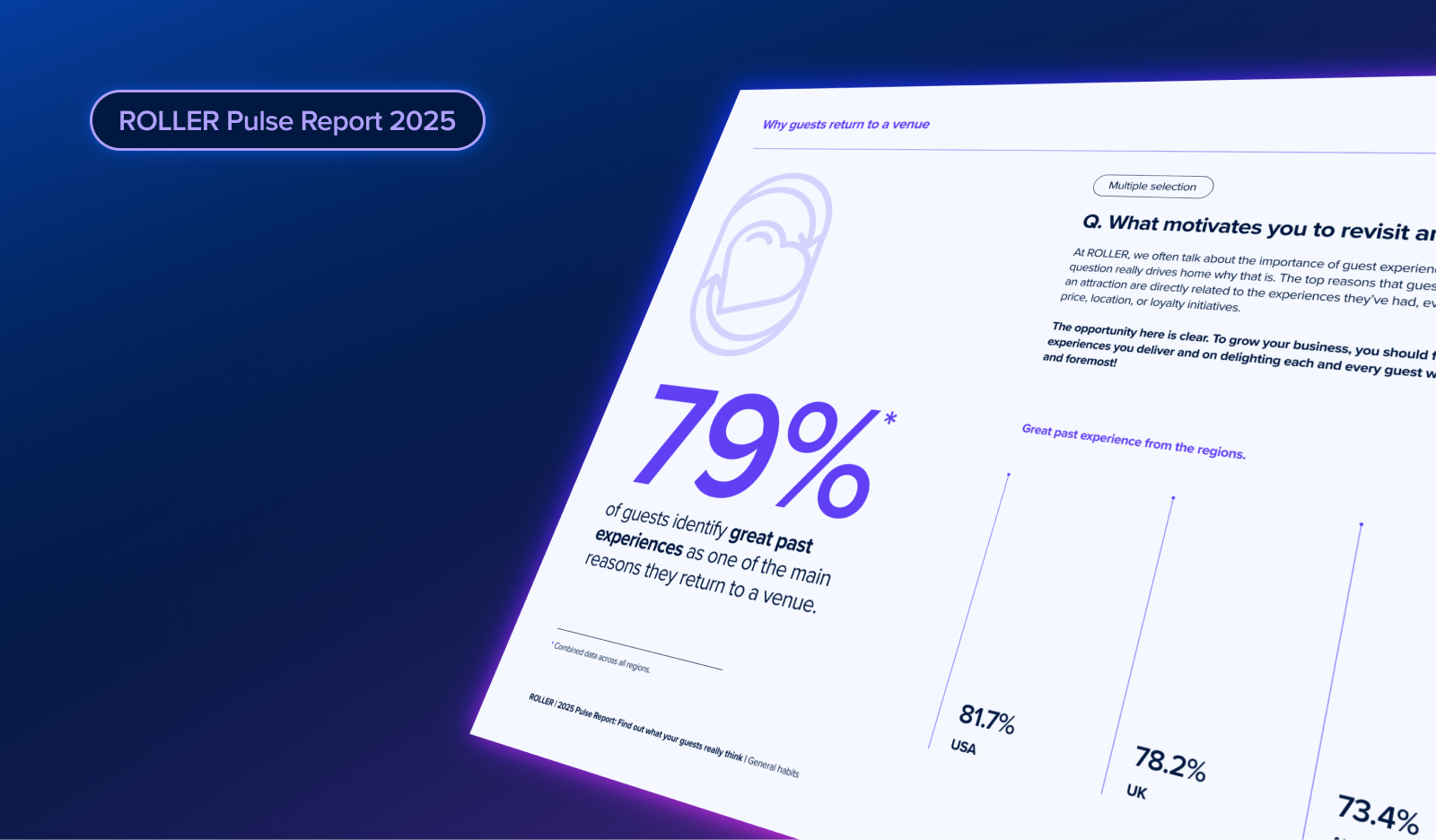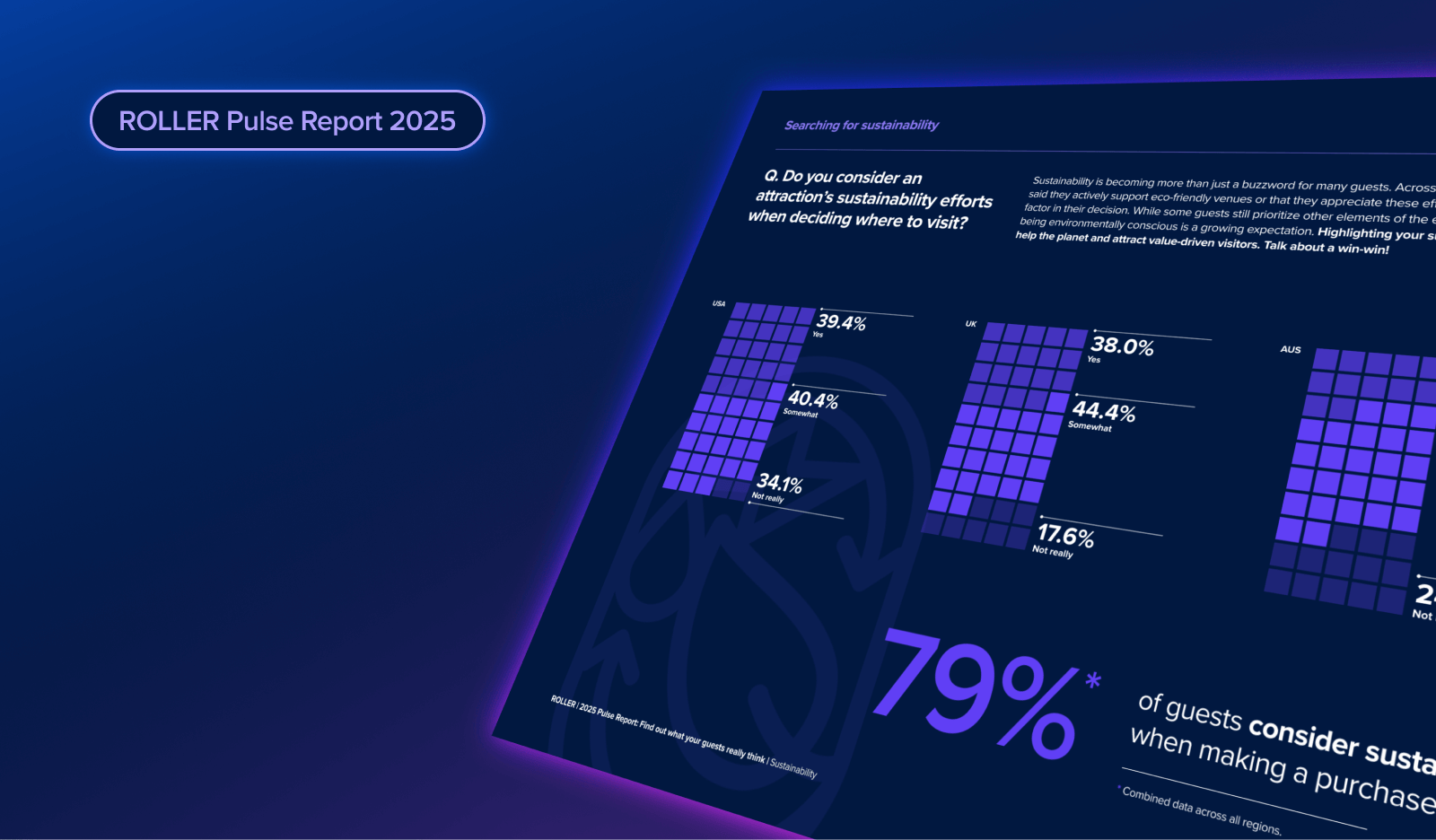How Lifetime Value Fits in with Your Guest Experience Strategy

If you Google “customer lifetime value,” you will find a substantial amount of research, data, and formulas that are geared toward the total net profit that a customer may spend over the course of their life. To simplify the concept, Shopify sums it up nicely:
“The lifetime value of a customer, or customer lifetime value (CLV), represents the total amount of money a customer is expected to spend in your business, or on your products, during their lifetime.”
Source: Shopify
How does this fit in with running a family entertainment center? So often, managers, owners, and operators are too caught up in the day-to-day operations to pull back and look at how to grow certain metrics like CLV (or LTV, depending on how you look at it). But there’s good news: it is because of what happens in those moments, while you are on the floor and interacting with guests, that determines the lifetime value of a guest.
Don’t just look at lifetime value on a spreadsheet, align it with your guest experience strategy.
When looking at the best ways to focus your guest experience toward lifetime value, it makes sense to break it into three primary functions: growing lifetime value, salvaging lifetime value, and fostering lifetime value.
Let’s quickly look at each of these functions as relates to your operations and marketing strategy.
Growing lifetime value
It’s one thing to know the lifetime value of every guest, but it’s another to grow it. Growing lifetime value enables you to ask, “What will encourage this guest to come back in the future?” This can then guide your promotion strategy, including which days of the week you run certain specials, to managing your event calendar so you can market to previous guests who have otherwise experienced everything you have to offer, to new attraction development and capital expenditures that will a) bring in new guests, and b) bring back guests who have “been there, done that.”
Each of these tactics should then fuel your loyalty strategy. How are you converting transient guests into repeat visitors? How are you using daily specials, upcoming events, and new attractions to suggest that guests become passholders or members? If you don’t currently have a membership or annual pass, what will resonate with guests the most so that they spend additional money, return more, and reap the benefits of the value you provide?
Salvaging lifetime value
While much of your focus should be on growing the lifetime value of each guest, you must also put contingencies in place for when the experience goes awry. There will oftentimes be instances where you will need to intervene into the guest journey and recover from service failures that will diminish lifetime value. Since one third of customers will not return to a business after a single poor experience, it is critical to incorporate a service recovery strategy that will win guests back and restore their lifetime value.
While this is the case for guests onsite, your post-visit guest communication must also be top notch. Pay close attention to guests who did not speak up during their visit, but took their experience to online review websites and social media. While many of the service recovery best practices remain the same, a slightly different approach is needed when responding to online reviews and when interacting with guests on social media. Both of these are critical to not only saving the lifetime value of the guests who complained, but also to not lose future business from those reading their posts, and your replies.
Fostering lifetime value
Now let’s put fuel on the fire. With an active strategy in place to convert first-time visitors into loyal guests and a plan to correct issues as they arise, you are on the right track toward continuously increasing your guests’ lifetime value, which will set your business up for long-term success. Once the first two steps are complete, you must protect the systems that you’ve built, and decide when it will be best to spend money in the interest of gaining the return on experience.
One way is to recognize and appreciate loyalty as you see it. From a simple “thank you for your loyalty” to using guests’ names so you can personalize the experience, your guest service strategy should focus heavily on treating your loyal guests like a VIP when they visit. Annual passholder previews and members-only events are great ways to engage your most loyal guests and regularly give them even more value than the cost of their pass or membership.
There are many creative ways to recognize and reward guest loyalty.
Then, lastly, your most loyal guests must become an extension of your marketing efforts in that they must actively introduce new guests to your business, who will start back at the first step of growing lifetime value of first-time visitors. By leveraging the power of word of mouth, your guests with the highest lifetime value are also credited with raising the lifetime value of others as well, by being your advocates.
Lifetime value should guide your guest experience strategy, knowing that every small moment you make for your guests isn’t just a nice thing to do; it comes back to your business in the form of revenue and lifelong loyalty.
Related articles

.png)
What the 2025 Pulse Report Reveals About Guest Booking Behavior at Attractions

2025 Pulse Report: How Sustainability Is Shaping Guest Expectations
Enhance your guest experience
Get free education, tips and inspiration to help you run a successful venue.